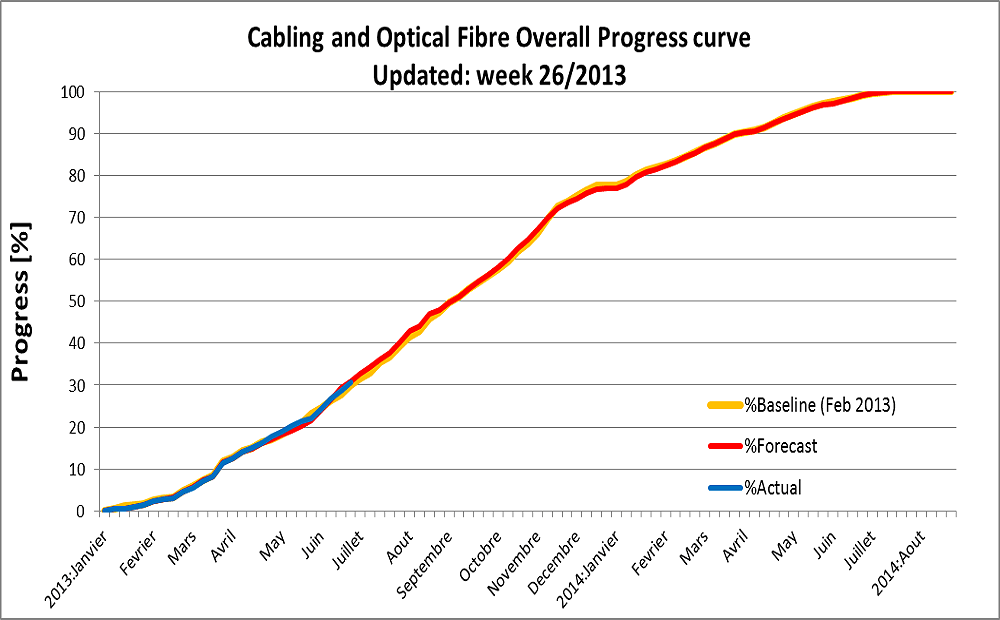.
The management of large cabling campaigns during the Long Shutdown 1 of LHC
The Large Hadron Collider (LHC) at CERN entered into its first two-year-long shutdown period (Long Shutdown 1, LS1) in February 2013. During this period the entire CERN accelerator complex, will undergo major consolidation and upgrade works, preparing the machines for LHC operation at nominal energy (7 TeV/beam).
In this framework one of the most important activities is the removal, replacement and installation of copper and optical fiber cables used for instrumentation, networking and control systems. Around 1000 kilometers of cables, distributed in different machine areas, will be installed. This activity will be carried out mainly by the Cabling and Optical Fiber (CF) section in the Electrical Engineering group (EL) of the CERN Engineering Department (EN).
The activity requires substantial project management efforts and a massive deployment of resources, consisting of CERN staff and external contractors, to complete all the expected tasks within the planned dates. A progress monitoring method was defined to manage the extraordinary increase of cabling projects (about four times more the normal yearly workload of the section, for a total investment of roughly 15 MCHF). The section’s structure was enhanced, introducing support functions for assisting the management in the critical coordination aspects. Five contracts were set up with external firms to carry out the planned cabling projects.
Supply of qualified material was organized as from 6 months to one year in advance. All the cabling installations were grouped by geographical campaigns to facilitate the resource and material distribution and to optimize the intervention time in those areas.
The campaign time-slots have been fitted in the planning by increasing as much as possible parallel tasks and by looking for a good compromise between the accelerators’ priorities and users’ requests. Resource optimization was finally achieved by smoothing manpower peaks where possible. The development of a specific progress monitoring tool guaranteed the weekly monitoring of the cabling activities, allowing for a dynamic redistribution of the resources in case of delayed or anticipated schedule. This paper describes how this method was implemented and presents the achieved results.

Leave a comment